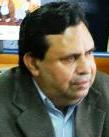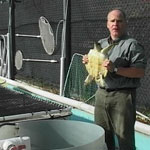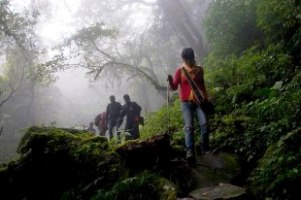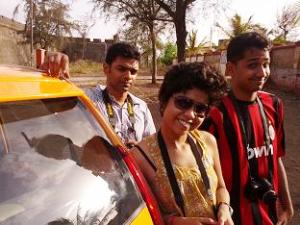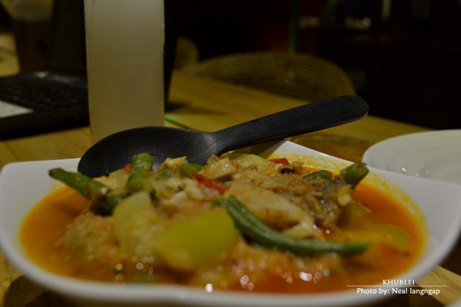Sudeep Chakravarti's acclaimed travelogue on Manipur and Nagaland, Highway 39 Journeys through a Fractured Land underlines once again the inner and outer complexities of India's Northeast, disturbed politically, socially and emotionally for over four decades.
This disturbing factor has put New Delhi both on the offensive and the defensive - described by many commentators as a policy hinging on the classic 'carrot and stick' adage. This is a deeply troubling indictment, in the sense that although the stick is wielded liberally over all these decades, the 'carrot' people have maintained has not accrued equitably to all sections of the society.
A major grouse of most people is that the largesse distributed in terms of government funds described cynically by many as doles has not percolated in an equitable manner. It has often been argued that unscrupulous people in these states together with politicians are in an unwritten agreement with politicians and government officials at the Centre. Such a contention cannot be proved in a facile manner nor perhaps be disproved.
While launching the book Chakravarti also echoed a similar contention. The question again and again which recurs is: Where do all the funds go as the funds generated do not seem to be in consonance with development or for that matter what is often bandied as economic growth. In a recent article in the Outlook Magazine, Professor Amartya Sen together with a visiting professor in Allahabad University argued that development is not necessarily growth. India has registered enormous growth in the last decade or so but this is not all development. The argument cited that mobile telephony is now available to almost everyone especially in the rural areas is only an indicator of how poverty is glamorized. What if we say that to many in the country mobile phones or access to them is indeed a luxury? Poverty is laced with ostentation.
Coming to the question of the Northeast the problems are intricate. The first is the premise. Is Northeast India a single entity? If so on what measures do we identify for this discourse of singularity? Even within communities there are linguistic and cultural diversities. Once again at the launch of the book Chakravarti has raised this issue of a singular approach which characterizes all our thinking, or discourses, or feelings on Northeast India. Then where does the problem lie?
I have seen and understood that in this theme of a single entity there is truth. Whether we blame the Centre for it or not, at one level this talk of a single entity is true; when there is one voice representing the people of the region. Take for example the very unfortunate and tragic deaths of two students from Meghalaya and Manipur. These incidents triggered protests which signified a single voice and demonstration of unity of almost all the states of Northeast India, so much so that the matters were taken up at the highest levels of the Central Government.

Speaking of the dimension of ethinicity in the region there has been a proliferation of seminars and books on this issue. In fact, in the 1980s and the 1990s it was a fashion for publishers in the mainland to publish books on this matter. Northeast was and still is for all its problems very saleable and marketable. These books perhaps coloured the lines of university and government libraries. But the sub nationalism or nationalism that was at stake through the tortured histories of some of the states of Northeast India is the crux. This matrix has been lucidly evoked by Chakravarti's book Highway 39 Journeys through a Fractured Land. Highway 39, which begins in Numaligarh in Assam ends in Moreh in Manipur bordering Myanmar. The highway becomes a metaphor of the Naga and the Manipuri question and conciousness, dichotomizing the travails of both the hills and the valley. And the destinies of the people of the hills of Manipur are also linked with those in the State of Nagaland: the larger Naga question which seems insoluble at the moment and which has been defied by the States of Manipur, Assam and Arunachal Pradesh.
The point of the matter is there is a sense of division between the hills and the valley in Manipur both chalking out their separate historical dimensions. One related to the Naga question of separate indentities and the other tracing its origin to the historical kingdom of Kangla, epitomized today by the Kangla Fort which is again today a relic of the government. Historicity is a question in the Northeast, in the sense that the Nagas claim a separate identity, a different historical discourse as twice removed from the Utopian Indian concept of unity in diversity.
This is true perhaps of Manipur, Nagaland and even Meghalaya where prior to independence there was the rule of small dominions and kingdoms. The question that is often raised is how did they become a part of the Indian Union? Was there recaltricance on the part of the local rulers or the state? If so then how did local aspirations come under the cover of a single Indian Union? Many of the states of the region still hold on to their traditional institutions which has been coming through centuries and historically handed down. If one reads Chakravarti's book carefully both the Naga and Meitei identities have not been resolved as part of the larger Indian conciousness. There is ceasefire, maybe in Nagaland but this is not peace. Moreover, apart from the separatism of the Meitei and the Naga conciousnesses there are also factions in the Naga leadership.
Splinter groups among the militants have also emerged complicating matters and making the talk process with the government arduous and sometimes meaningless. Although, the Mizo problem has been solved the nationalistic aspirations of the people of Manipur, Nagaland, Tripura and to some extent Meghalaya are still to be dealt with. Similarly, in Assam the tribal areas are at unrest. If the common people suffer, being at cross roads in the fight between the militants and the government machinery there are many among these people who feel their separatist urges.
Such separatism stems from a different and diverse history, racial and ethnic background, what is loosely called culture and also, religion. These are the issues we must look at, the feeling of being different, the feeling of being neglected, and the feeling of being racially profiled; before clobbering the common people, the masses with draconian laws in the measure and in the form of say the Armed Forces (Special Powers) Act 1958. The one voice which has relentlessly fought against this silently, in Manipur, Irom Sharmila is also a voice that has been unheeded for the last eleven years.
It is against the backdrop of larger perspectives that I always look at the question of India's Northeast as a land peopled by diverse communities, religions and cultures, a land which is beautiful but fearful to many. It is only with imagination and empathy that the problem can be addressed and not by doles, which in turn only increases corruptibility in its forces.
Reconciliation can take place only through understanding and love. It is the reaching out process that is of cardinal importance here. Otherwise the dialectics of mainland and outland will always remain, to perennially trouble us.

